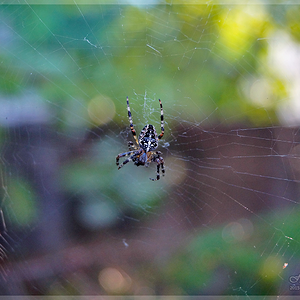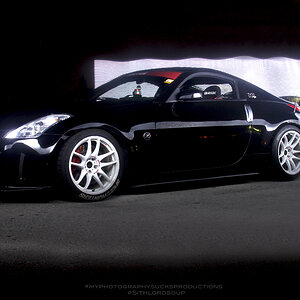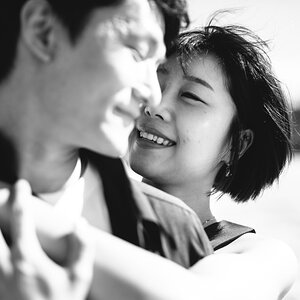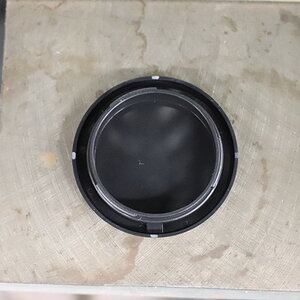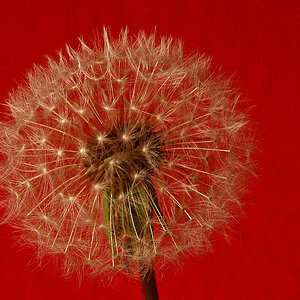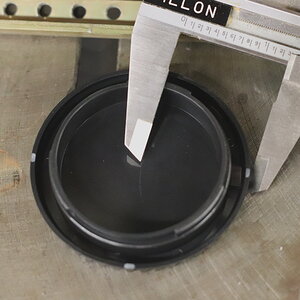Navigation
Install the app
How to install the app on iOS
Follow along with the video below to see how to install our site as a web app on your home screen.

Note: This feature currently requires accessing the site using the built-in Safari browser.
More options
You are using an out of date browser. It may not display this or other websites correctly.
You should upgrade or use an alternative browser.
You should upgrade or use an alternative browser.
Everything edited?
- Thread starter Markw
- Start date
rufus5150
TPF Noob!
- Joined
- Mar 8, 2008
- Messages
- 1,658
- Reaction score
- 2
- Location
- Austin, Texas
- Website
- www.toddmckimmey.com
- Can others edit my Photos
- Photos NOT OK to edit
Apologies for eternally plugging this book... but... I read Scott Kelby's tutorial on how to color correct with curves in his book, Photoshop CS3 for Photographers, and have been in love (and sometimes hate) with that method ever since. He states it pretty clearly, paraphrased:
All digital cameras make some guesses as to how to properly record the colors; most get it wrong.
All digital cameras make some guesses as to how to properly record the colors; most get it wrong.
Markw
No longer a newbie, moving up!
- Joined
- Jul 25, 2008
- Messages
- 4,057
- Reaction score
- 230
- Location
- Baltimore
- Website
- www.outsidetherainbow.com
- Can others edit my Photos
- Photos NOT OK to edit
Besides photoshop, what image editing software would yous suggest?
Mark
Mark
rufus5150
TPF Noob!
- Joined
- Mar 8, 2008
- Messages
- 1,658
- Reaction score
- 2
- Location
- Austin, Texas
- Website
- www.toddmckimmey.com
- Can others edit my Photos
- Photos NOT OK to edit
I've used both GIMP (for many, many years, and it's free) and Paint Shop Pro. The latter I've found adequate and GIMP, though it has some quirks, has a fairly good feature set.
MarcusM
TPF Noob!
- Joined
- Sep 12, 2007
- Messages
- 1,236
- Reaction score
- 0
- Location
- St. Paul, MN, USA
- Can others edit my Photos
- Photos OK to edit
Here is a tutorial i watched just yesterday on Curves in PS. Very helpful and shows you what happens when Curves go wrong. Hope it helps.
http://www.youtube.com/watch?v=ORM6AZY19pw
That was a great tutorial, thanks for that. I didn't really understand how curves fully worked but that explains it very simply.
json2001
TPF Noob!
- Joined
- Aug 4, 2008
- Messages
- 7
- Reaction score
- 0
- Can others edit my Photos
- Photos OK to edit
That was a great tutorial, thanks for that. I didn't really understand how curves fully worked but that explains it very simply.
Great! I found it very helpful and easy to understand as well.
MarcusM
TPF Noob!
- Joined
- Sep 12, 2007
- Messages
- 1,236
- Reaction score
- 0
- Location
- St. Paul, MN, USA
- Can others edit my Photos
- Photos OK to edit
Wow, once again thanks for the tutorial! I never realized the full power of Curves until tonight. I've been playing with it all night, and actually the changes appear more subtle after posting to Photobucket. They're more discernible on the originals, but you can get an idea.
Original

Curves adjustment

Original

Curves adjustment

Original

Curves adjustment

Original

Curves adjustment

Original

Curves adjustment

Original

Curves adjustment

Battou
TPF junkie!
- Joined
- May 10, 2007
- Messages
- 8,047
- Reaction score
- 66
- Location
- Slapamonkey, New York
- Website
- www.photo-lucidity.com
- Can others edit my Photos
- Photos NOT OK to edit
I personally try to limmit my editing and post a lot of unedited pictures. I personally do not consider minor sharpening an "edit", this is because I shoot film and my scanner looses some sharpness in the transition from negitive to computer so it's absolutely necessary for me. as far as cloning goes I refuse to clone out objects that exist as part of the scene, but I will clone out artificial specks caused by dust on the negitive or an unseen hair on the lens.
Now since I don't have access to my originals where I am at right now to show direct comparisons for procedded and unprocessed, here are some of the ones with minimal processing and what was done.
http://thephotoforum.com/forum/showthread.php?t=133224 - Minor sharpening
http://thephotoforum.com/forum/showthread.php?t=132961 - Contrast push (+10), Minor sharpening
http://thephotoforum.com/forum/showthread.php?t=129880 - Straight out of the scanner
http://thephotoforum.com/forum/showthread.php?t=123107 - Straight out of the scanner
Now since I don't have access to my originals where I am at right now to show direct comparisons for procedded and unprocessed, here are some of the ones with minimal processing and what was done.
http://thephotoforum.com/forum/showthread.php?t=133224 - Minor sharpening
http://thephotoforum.com/forum/showthread.php?t=132961 - Contrast push (+10), Minor sharpening
http://thephotoforum.com/forum/showthread.php?t=129880 - Straight out of the scanner
http://thephotoforum.com/forum/showthread.php?t=123107 - Straight out of the scanner
ksmattfish
Now 100% DC - not as cool as I once was, but still
- Joined
- Aug 25, 2003
- Messages
- 7,019
- Reaction score
- 36
- Location
- Lawrence, KS
- Website
- www.henrypeach.com
- Can others edit my Photos
- Photos NOT OK to edit
In other words, at what point would "processing" become "editing"?
When people misuse the word "edit".
With the photographic methods I'm familiar with there is no photograph without processing.
If you take the glass or metal plates out of pre-film-days cameras you have a blank, emulsion coated glass or metal plate; it must be processed to produce an image. If you take the film out of a film camera it remains opaque strips and sheets of emulsion coated plastic until it's developed. It you take Polaroid film out of a Polaroid camera without running it through the rollers to release the processing chems, it never becomes a picture.
The invention of film and automated processing allowed developing and printing to be outsourced. Before dry plates, and film a few years after, processing had to be done shortly after the exposure was made. Mechanized, automated, uniform film processing was cheap and fast, and anyone could run the machines, but many of the image control techniques available in a darkroom weren't possible in a machine. The only image control for the photog was at the time of exposure. Custom processing allowed for significantly more image control, not only in exposure, but also in the developing and printing stages. But it was expensive and slow, and required trained personnel or the photog to do it themselves.
For the last 100 years the vast majority of photogs have chosen cheap and fast
All digital cameras shoot raw. Raw files are not image files, they are data files. They can't be seen as a photo until they are processed into an image file like a jpeg, tiff, psd, etc... If you have your digital camera set to jpeg it's still shooting raw, but it processes the raw file into an image file, usually a jpeg, with the in-camera processing software. To me the difference between processing with the in-camera software or with out-of-camera software is mainly location. Did the processing occur here and now, or later way over there?
Currently there is another issue: in-camera software is less sophisticated than almost all of the popular out-of-camera processing software. That's not to say excellent processing can't be achieved with the in-camera software, but there are almost always more options and more precise control available with out-of-the camera software if you want/need it. Compare the simple sharpness/saturation/contrast slider bars on high dollar DSLRs to Photoshop. I'm actually a big fan of simple, but so far I've been way more impressed with Adobe software than anything Canon has provided me with. As powerful computing power gets smaller the in-camera options will improve. Someday we may be able to load Adobe processing software into our Nikon and Canon DSLRs.
It seems to me that a lot of processing discussions are actually about how accurate a photograph is to reality. That's tough one because different people have different ways of looking at the world. Anyone can come up with their own rules if they want, or they can choose to use someone else's rules. For instance we hope that photojournalists follow the rules for acceptable processing manipulations as stipulated by their professional organizations. In general art has no rules. Particular contests, exhibitions, clients, jobs, etc... may have rules they want followed, but the artist working for their own pleasure is under no obligation to follow other folks' art rules.
Alex_B
No longer a newbie, moving up!
- Joined
- Aug 30, 2006
- Messages
- 14,491
- Reaction score
- 206
- Location
- Europe 67.51°N
- Can others edit my Photos
- Photos NOT OK to edit
as stated, we should not confuse post-processing with processing. every image is processed. some trust their camera (digital) or their lab (film) to know what processing is best for their images, others want to influence the outcome by the choices they have when they do the processing by themselves.
i reserve the term post-processing to images that need repair, or when i want to induce certain effects, do some retouche (cloning, removing unwanted elements, tonemapping, ...)
and, as stated, editing is something different altogether again
i reserve the term post-processing to images that need repair, or when i want to induce certain effects, do some retouche (cloning, removing unwanted elements, tonemapping, ...)
and, as stated, editing is something different altogether again
bigalbest
TPF Noob!
- Joined
- Jun 5, 2008
- Messages
- 505
- Reaction score
- 0
- Location
- Litchfield Park, AZ
- Website
- www.sandphotos.blogspot.com
- Can others edit my Photos
- Photos OK to edit
More and more as time goes along I am processing less and less. It is possible to get great images with very little post work but usually requires the use of strobes to balance different light sources. I am not a snob about post work and there are some people who are doing great stuff with processing software but I think not enough emphasis is being put on exposure excellence. The below image is straight out of the camera.


Alex_B
No longer a newbie, moving up!
- Joined
- Aug 30, 2006
- Messages
- 14,491
- Reaction score
- 206
- Location
- Europe 67.51°N
- Can others edit my Photos
- Photos NOT OK to edit
The below image is straight out of the camera.
I agree nothing can beat good exposure. But still you have to translate the sensor data into a viewable image. This is either done by the default settings of your camera's manufacturer (what you call straight from the camera), or by actively selecting the processing parameters.
NateS
TPF Noob!
- Joined
- Sep 27, 2007
- Messages
- 2,750
- Reaction score
- 39
- Location
- Missouri
- Can others edit my Photos
- Photos NOT OK to edit
I do something to all of my photos, but usually minor things and 90% of the time in Capture NX on only the RAW file. I rarely do anything beyond a levels adjustment, sharpening, WB adjustment or slight exposure comp. I only take a file to a Post-Processing program (I use Gimp) if I need to clone something out, or clone out dust from my lens.
bigalbest
TPF Noob!
- Joined
- Jun 5, 2008
- Messages
- 505
- Reaction score
- 0
- Location
- Litchfield Park, AZ
- Website
- www.sandphotos.blogspot.com
- Can others edit my Photos
- Photos OK to edit
I agree nothing can beat good exposure. But still you have to translate the sensor data into a viewable image. This is either done by the default settings of your camera's manufacturer (what you call straight from the camera), or by actively selecting the processing parameters.
Yes that's true but my point is better exposures equal better pictures. As opposed to taking decent shots and "fixing" them in post. All my pictures are taken in raw by the way in case adjustments need to be made. With this picture no adjustments were needed so all I did was click print and then saved the unaltered shot for the web.
K_Pugh
No longer a newbie, moving up!
here's a link to i think my only pre and post 'work'.
http://www.thephotoforum.com/forum/showthread.php?t=133151
I usually try to get the most out of the RAW adjustments, then in PS3 the usual levels, curves, sometimes shadow/highlight, smart sharpen, etc. I tend to stay away from spot editing as i'm not that good with doing so.
I, too, like to get the best i can out of the camera but most shots most people take i'm sure can benefit form a little processing just to fine tune the shot.
Post processing is also another skill a photographer should have i believe, it's nothing to look down at, or should be avoided but the less you have to do the better, imo.
http://www.thephotoforum.com/forum/showthread.php?t=133151
I usually try to get the most out of the RAW adjustments, then in PS3 the usual levels, curves, sometimes shadow/highlight, smart sharpen, etc. I tend to stay away from spot editing as i'm not that good with doing so.
I, too, like to get the best i can out of the camera but most shots most people take i'm sure can benefit form a little processing just to fine tune the shot.
Post processing is also another skill a photographer should have i believe, it's nothing to look down at, or should be avoided but the less you have to do the better, imo.
Similar threads
- Replies
- 6
- Views
- 640
- Replies
- 11
- Views
- 184
- Replies
- 10
- Views
- 797

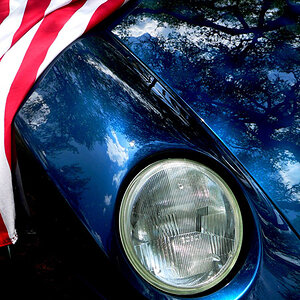
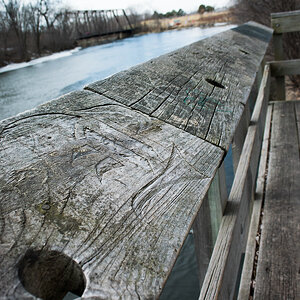
![[No title]](/data/xfmg/thumbnail/34/34344-0b42e0e92ad436e6710a1b9c4585d6df.jpg?1619736379)
